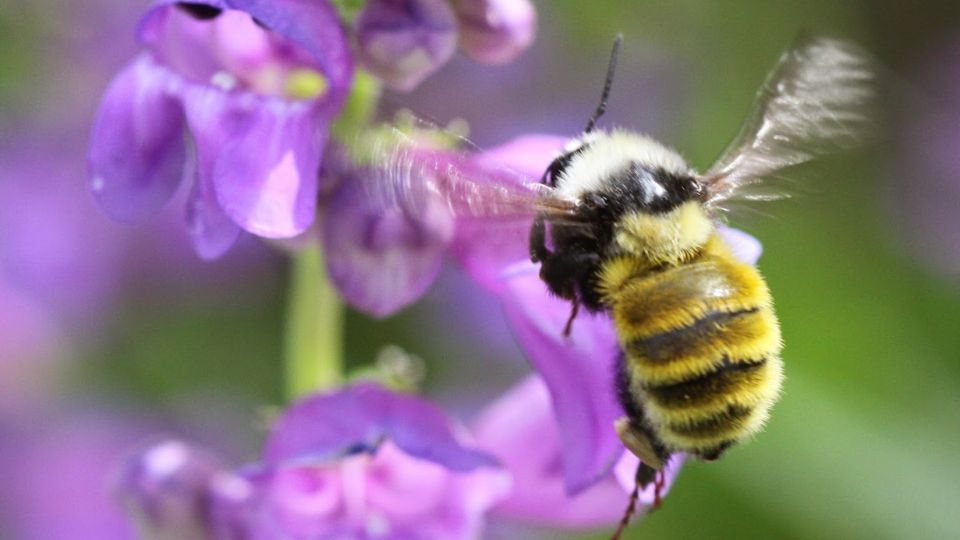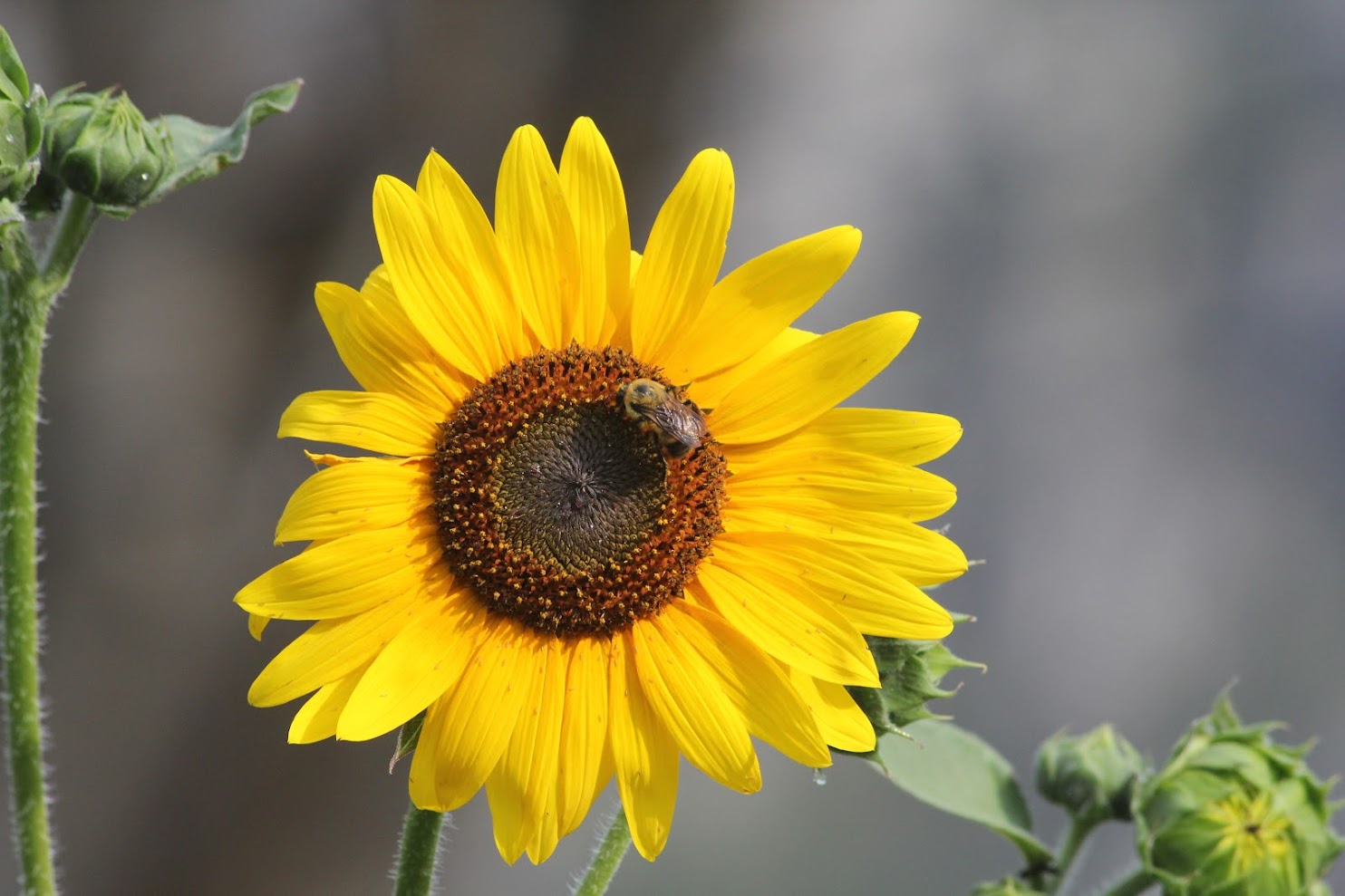Creating Sustainable School and Home Gardens:
Welcoming Pollinators

Insects play a very important role in your garden as pollinators, prey for beneficial wildlife, predators controlling insect pests, and as soil nutrient recyclers. Follow the best gardening practices below to promote insect conservation and create healthy, sustainable environments for both people and diverse animals to enjoy.
Insects play a special role in gardens as pollinators, prey, predators, and recyclers.
Provide a Safe and Effective Habitat
- Offer food (nectar and pollen) all year. Pollinators need pollen and nectar plants in all seasons.
- Protect habitat for nesting and overwintering. Create structurally diverse gardens. Grow a variety of trees, shrubs, grasses, perennial and annual flowers. Plant in clumps. Leave leaf litter over winter. Don’t clip off old flower stalks—leave them until spring. Avoid using ground barriers; many pollinators nest in the ground. Provide native solitary bee homes.
- Avoid pesticides, including organic ones. Insecticides kill all insects—even the good guys!
Recommended Plantings

- Hardy annuals: Bachelor button, California poppy, and foxglove.
- Summer annuals: Cosmos, sunflower, zinnia, and African blue basil.
- Perennials: Black-eyed Susan, bee balm, Joe Pye weed, butterfly weed, coreopsis, goldenrod, wild blue indigo, milkweed, mistflower, purple coneflower, Shasta daisy, white clover, prairie clover, sneezeweed, lavender, goldenrod, sedum, and salvia.
- Trees and shrubs: Russian sage, redbud, flowering dogwood, maple (flower early), holly (Nellie Stevens or Burford), azalea, viburnum, cherry laurel, butterfly bush, beauty berry, blueberry, and blackberry.

- Herbs and vegetables (beneficial to pollinators and delicious in your own food): Sage, rosemary, parsley, fennel, basil, thyme, African blue basil, mint, oregano, lemon balm, and squash.
Key Considerations for Your Garden
Continuous Blooms
Choose long-lasting flowers that bloom throughout the season or various flowers that offer blooms at different times.
Flower Diversity
Choose flowers with different colors, shapes, sizes, and bloom times to cater to diverse insect pollinator preferences. Avoid double blooms since they block access for pollinators. Native Plants
Native Plants
Native plants are adapted to the environment and the local pollinator community. Ornamental non-native plants can also be excellent pollinator plants, but be selective and consider native plants first. Also, beware of “nativars” (cultivars of native plants); they may not offer the same resources as the original.
Climate and Soil Types
Select plants suitable for your environment to avoid unnecessary inputs, labor, and replacement costs. Links to regional pollinator plant lists are available in the Resources section.
Enjoy and Share Your Garden
- Collect seeds from flowers and save them in a cool, dark, and dry place to plant the next year and share them with others.
- Document visitors: What pollinators and other insects did you see visiting your garden?
- Share your garden observations through a citizen science program or website, such as:
- iNaturalist (inaturalist.org).
- Project Budburst (budburst.org).
- The Great Sunflower Project (greatsunflower.org).
- Bumble Bee Watch (bumblebeewatch.org).
- Utah Pollinator Habitat Program (ag.utah.gov/pollinator-habitat-program/)
Resources
- Xerces Society (xerces.org) is a conservation organization for all insects, especially pollinators.
- Pollinator friendly plant lists (regional lists).
- Pollinator resource center (regional lists).
- Lady Bird Johnson Wildflower Center (wildflower.org).
- Utah State University (USU) Extension (extension.usu.edu).
- U.S. Department of Agriculture (USDA) – Natural Resources Conservation Service (NRCS) (nrcs.usda.gov).
Acknowledgments
Smart Foodscapes (usu.edu/smart-foodscapes)
Learn more by scanning the QR code.

USDA – National Institute of Food and Agriculture (NIFA) – Sustainable Agricultural Systems (SAS) Grant #2021-69012-35952
Photo Credits
All photos were provided by USU Extension.
May 2024
Utah State University
Authors
Kaitlin Campbell, Rita Hagevik, and Kathy Cabe Trundle
Related Research


 Staff Resources
Staff Resources